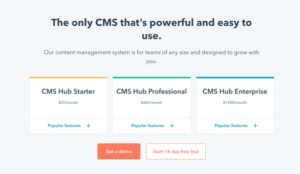What’s in this article:
- A guide to local SEO for beginning businesses
SEO is essential to any business’s marketing strategy — as necessary to restaurants as e-commerce sites. But your approach to SEO can depend on the kind of business you run. Standard tactics may work for a tech company, but brick-and-mortar businesses will need to master a different type of SEO to succeed. It’s called local SEO, and it is one of the most important tactics in modern marketing.
Become the best CRMer you can:
CRM Hack: Monitoring the User’s Heartbeat
What Does It Mean to Treat a Customer’s Email With Respect?
To Lock or Not to Lock Customers (into CRM Journeys)
What the Efforts to Promote Responsible Gaming Look Like Form the Inside
So, what is local SEO? If you have a smartphone (or internet access, for that matter) and add “nearby” to a query, the results page mostly consists of the businesses that know how to optimize for you. Every day, almost everyone uses search to guide their community shopping. In fact, Google reported that it accounts for 46% of all searches.
So, if you’re excited but don’t know where to start, you’ve come to the right place. This blog is your local SEO cheat sheet.
Aim for the “snack pack”
The holy grail of local SEO is to feature in the “snack pack”: the top three results at the very top of your search engine results page (SERP) for a local query. Each listing makes it easy for searchers to evaluate its relevance, often including information like review average, address, phone number, category, and business hours.

Ahrefs reported that 33% of SERP traffic goes to businesses that get featured here by Google, which makes claiming one of these slots a key goal for your local SEO plan.
So how do you earn the right to this prime real estate? Like any goal in is SEO, there’s no one tactic that gets you there. Winning requires several techniques working together in harmony.
Which is what we’re covering next.
Optimize your keyword research for local
You don’t get anywhere in SEO without solid keyword research, and local SEO is no different.
What’s different is the format of local search queries, which, for the most part, will be the name of a service with “near me/nearby” or the name of a specific location. “San Francisco doctors,” “food near me” and “grocery stores in Cincinnati” are all examples of this query construction.
Once you’ve brainstormed every possible query combination, you can also use classic research techniques like autocomplete to create even more long-tail keywords. Just go to Google, type in a keyword you have (like “San Francisco doctors”), and see what the search engine suggests.

Craigslist is another good source of inspiration. The formatting for listings of similar services in your area contains a treasure trove of potential keywords.
Perfect your Google My Business (GMB) profile
According to SEJ, building a strong GMB account is the best thing you can do to improve your local SEO ranking. It’s also a significant opportunity for differentiation, as 56% of local retail businesses still don’t have an account.
GMB is Google’s go-to source of information on your business: It’s where the snack pack gets its data. But don’t feel too daunted by the prospect of creating your profile. It will feel natural to anyone with a Facebook account. You’ll need to enter information like your business’s name, address, hours of operation, and contact information.
You should also choose your business’s category — and choose it carefully. It’s the most crucial data point to get right when it comes to ranking. This is just the beginning of your GMB journey, so make sure to monitor your account and continue to add everything you can to it. Your investment will pay off.
One more note: Getting your GMB profile up and running establishes one of your business’s most credible online citations. But GMB is far from the only place you’ll want to have your name, address, and phone number listed (NAP). From Apple maps to local directories, the more times you get consistent versions for your NAP online, the better your business’s local search performance will be.
Cultivate and monitor customer reviews
After the almighty GMB, reviews are next in line in their impact on local search rankings. To win the review game, you need a good product offering, a steady stream of reviews, and a reliable response plan. The first of those ingredients is beyond this blog’s scope, but we’ll touch on the other two.
The best way to generate reviews is also the simplest: Just ask. Research by BrightLocal revealed that 76% of clients leave reviews when asked. From personal requests to text messages, there’s a number of ways to ask your customers to review your business. But in general, if you make the request directly and sincerely, the reviews should start flowing.
As they do, it’s vital to respond quickly and kindly to any feedback — especially negative. Reading reviews is par for the course for consumers, and 71% of them take the responsiveness of the business into account when making buying decisions. Just make sure to dedicate adequate resources in this area because your (potential) customers are watching.
Don’t forget SEO fundamentals
Finally, while local SEO has its own specialized set of tactics, you still need a strong foundation.
Make sure your site is mobile-friendly and loads quickly. Structure your pages correctly, using keywords naturally in titles, sub-headers, and body content. Follow standard title length guidelines and write compelling meta descriptions. Create pages where the keyword, title, and content align — and deliver on the searcher’s expectations. Only make pages with meaningful — and meaty — information.
This guide isn’t a comprehensive SEO checklist, but it will help you kick off a local search strategy. After all, you can’t win in anything without knowing the basics.
The post The Beginners Guide to Local SEO appeared first on Post Funnel.




